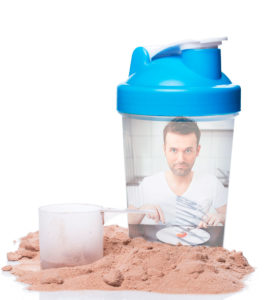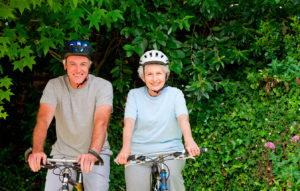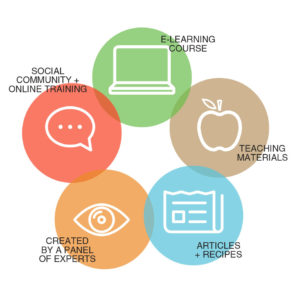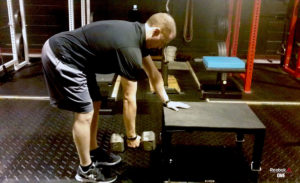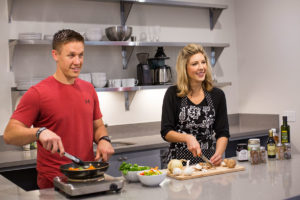Client Handouts/Tips for Clients
A Simple, Attainable Action Plan
Jinger S. Gottschall, PhD, earned her doctoral degree in integrative physiology from the University of Colorado, Boulder, and furthered her academic career as a postdoctoral fellow in neurophysiology at the Emory University School of Medicine. She is currently an associate professor at Pennsylvania State University, University Park, with a research focus on the effectiveness of various exercise regimes.
“How do you handle the situation when a client comes in sick or with an obvious medical condition such as open sores?”
I ask the client to obtain a medical clearance from a doctor before we can train. I explain that this is precautionary for his or her own health. Why do I ask for medical clearance? When clients are ill, exercise is most likely not going to benefit them. When a client seeks medical clearance, the doctor usually reinforces my original concerns.
Bill Ross
Owner, Bill Ross Fit and
Holistic Life Forever
Denver
6 Simple Swaps for More Mindful Eating
Replace clients’ mindless eating with mindless eating solutions for everyday life.
An Introduction to Motivational Interviewing
Motivational interviewing is a communication approach where a coach helps a client work through ambivalence toward behavioral change. It is highly effective for people who are ambivalent about change.
Tailoring A Behavior Change Intervention
Fitness professionals can get a good sense of how ready a person is to change their behavior by using motivational interviewing’s “readiness ruler.” The ruler includes two questions aimed at understanding how important change is to a client and how confident the client is that he or she can make a change.
Emerging Male Eating Disorder Is Tied to Supplement Use
??As a rule, far more women than men suffer from eating disorders, but a silent epidemic is growing among American males, according to the National Eating Disorders Association. The organization estimates that 10 million males in the U.S. will suffer from a clinically significant eating disorder at some time in their life and that about 43% of men are dissatisfied with their bodies.
The Impact of Chronic Pain
Use a three-pronged approach to help frail participants move better, get
stronger and improve their balance.
Did you know that more than 45% of Americans experience pain on a
regular basis? Are you one of them? Unfortunately, people tend to fall
into bad habits as the body adapts to, and becomes familiar with,
persistent pain (Duhigg 2012).
Move It or Lose It
Have you ever wondered how long it takes to lose muscle strength during
a workout hiatus? Researchers in Denmark wondered, too, and what they discovered might shock you.
Cut Postmenopausal Breast Cancer Risk
How much exercise is needed to reduce body fat—a known breast cancer risk factor—in postmenopausal women? That’s the question researchers explored in a study published in JAMA Oncology (2015; doi:10.1001/jamaon col.2015.2239).
Look Who’s Put a Block Party on the Plate
Zumba® instructors can now extend their celebration of fitness beyond the dance studio and help fuel all-around fitness with Plate by Zumba™, a healthy eating program and e-learning course.
Are You Creating a Supportive Customer Experience?
Whether you run a large personal training facility or a one-person business, treating your customers well should be at the heart of everything you do.
Four Language Swaps to Improve Client Adherence
What you say to your personal training clients can can affect how well they perform. Be sure you choose your words wisely so that clients maximize their potential.
Eight Key Elements in Quality Youth Development
If you want to coach youth to reach their sports training goals, consider these eight keys to quality youth development, created by educators at the University of Minnesota Extension:
HELP YOUTH FEEL PHYSICALLY AND EMOTIONALLY SAFE.
Trainer’s tip: Set boundaries and expectations with both the clients and their parents early on. Be a good role model and create a safe environment.
Understanding the Language of Movement
Coaches and trainers are really educators specializing in human movement, so it’s central to our success—and that of our clients—to build a fluid understanding of how humans learn to move and how we can influence their learning. ?
Row the Right Way
We can all assume that we know how to row, but if you’re serious about getting strong while keeping your shoulders healthy, you may just want to read this. Mike Robertson, ReebokONE Expert Contributor and President of Robertson Training Systems, breaks down the proper way to row.
Okinawa-Style Eating
Use a three-pronged approach to help frail participants move better, get stronger and improve their balance.
From Italy to India, many countries can teach us a lot about healthy eating—and fortunately, a number of traditional eating habits from various nations can be easily implemented into our diets to give them a nutritional upgrade.
Take a cue from the time-honored dietary strategies of Okinawa, Japan. Matthew Kadey, MS, RD, dietitian, freelance nutrition writer and recipe developer in Waterloo, Ontario, shares how.
Fit to Travel
Whether we’re vacationing with our family or heading to the 2015 IDEA World Fitness ConventionTM with 12,000 other fitness enthusiasts, it can be challenging to stay fit when we’re on the road. Even the healthiest exercise professionals can get caught off-guard with aches, pains, stress and guilt that prevent us from having fun and functioning at our best.
If travel throws the fittest of us off track, imagine what it does to everyone else.
The Stress Response and Nutrition
Stress triggers a series of reactions in the human body:
Building a Teaching Kitchen in a Studio
ave your clients ever asked:
“What should I cook for dinner?”
“How should I prepare it?”
“What if I have to cook a healthy
meal for my family?”





